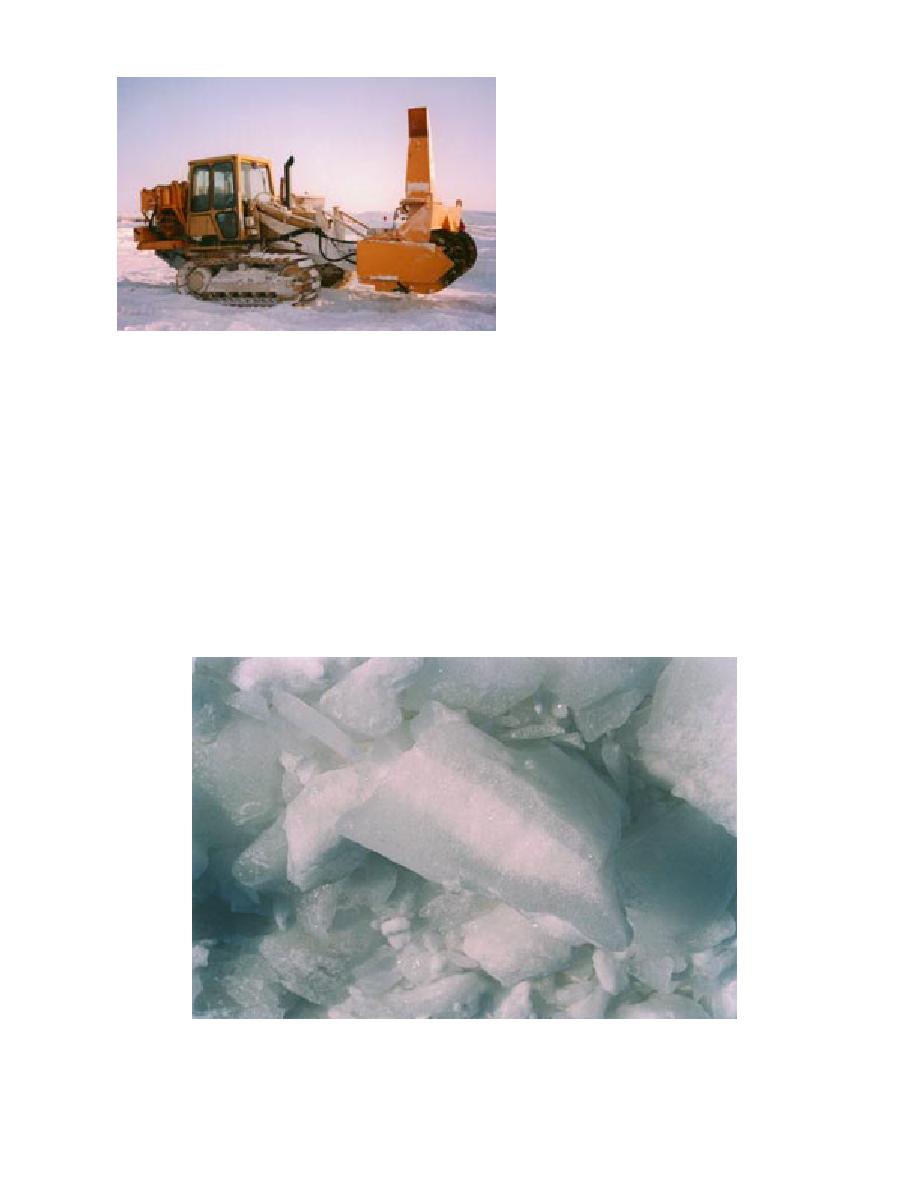
Engineering Laboratory (NCEL) (Barthelemey
and Thomas 1993). The "NCEL grader" com-
bines the functions of ice-cutting and debris
removal (Fig. 40), but was designed for use
on sea ice, which is often considerably weaker
than glacial ice. We suspect that this grinder
would work well for ice surfaces that re-
quired minimal smoothing/leveling. If sig-
nificant numbers of large bumps exist, or
much of the terrain requires a grade change,
the capacity and speed of the NCEL grader
are probably insufficient. In addition, a la-
ser-guidance system would probably be re-
quired to achieve the degree of smoothness
needed for a runway.
Figure 40. NCEL ice grinder. (Photo by J. Barthelemy, NCEL.)
Following initial grading and debris re-
moval, the runway should be carefully in-
If the site chosen requires that very little grad-
spected and sampled to determine ice integrity,
ing, other devices may be used to remove spoil.
including the presence of cracks, variations in ice
In addition to those named above, a rotary broom,
appearance or surface strength, potholes or other
a towed grader or angle plane, a drag box, or a
melt features, and to affirm the topography re-
scraper could be utilized at much less expense
vealed from the initial survey data. Cores should
and complication.
be taken, especially in low spots, to determine
We see few alternatives to using a grader (with
how much ice might need to be graded to remove
a blade similar to the ones we built) for smooth-
all porous or weak ice. This weak ice, which we
ing a bumpy natural ice surface. Although a simi-
called trash ice, is typically found in the shallow
lar cutting edge can be placed on the lower lip of
basins on the runway surface and often has large
a bulldozer, the crawler tractor will be difficult to
bubbles, incorporated lenses of snow, high con-
operate so that a reasonably level surface results.
centrations of mineral particles, and occasionally
Another option is an ice grinder, such as was
is held together only with thin segments of ice
designed for a similar purpose by the Naval Civil
plates (Fig. 41). The trash ice we discovered
Figure 41. Poorly consolidated ice including snow pockets.
39



 Previous Page
Previous Page
